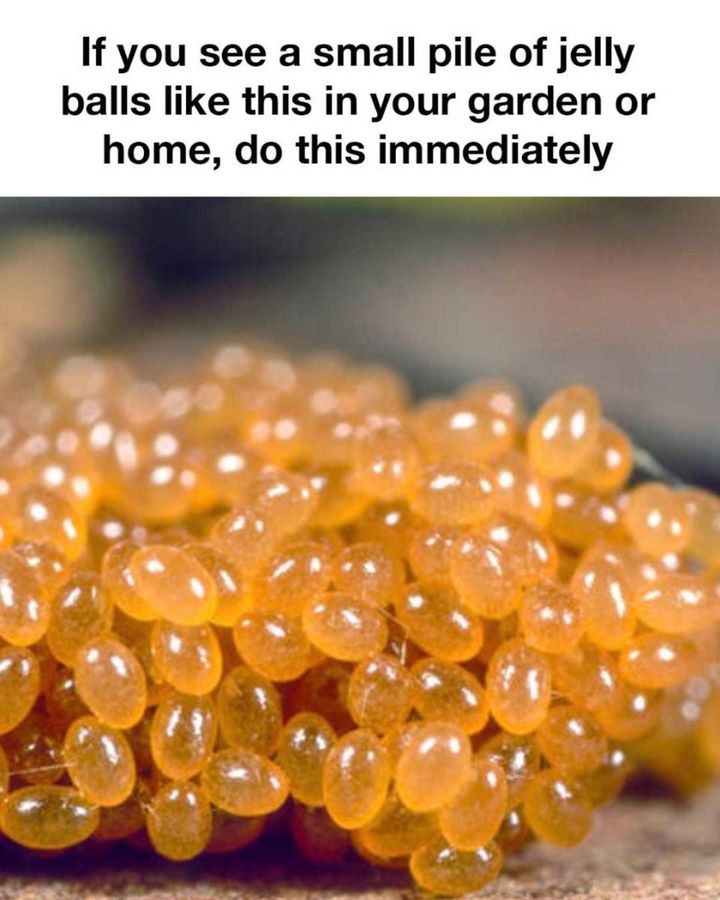Tick eggs may appear harmless at first glance, often resembling tiny clusters of jelly-like beads, but they represent the beginning of a potential infestation that can quickly spiral out of control if not addressed promptly. These eggs are laid by female ticks, which can deposit thousands at a time in suitable environments such as soil, leaf piles, garden beds, and even inside homes when conditions are warm and humid enough.

Understanding the tick life cycle—from egg to larva to nymph to adult—is essential in preventing these pests from establishing a foothold in your surroundings. The key to stopping an infestation is catching it early, and that starts with knowing where to look and what to look for. Tick eggs are typically found in dark, moist places where ticks prefer to lay them undisturbed. Outdoors, this could mean under mulch, in shaded garden beds, near woodpiles, or tucked into piles of dead leaves. Indoors, ticks may lay eggs in quiet, undisturbed corners, especially if pets are present.
The eggs themselves are often reddish-brown and laid in tightly packed clusters that resemble miniature caviar. Regularly checking these types of areas, particularly during tick season, is one of the best ways to detect a problem before it spreads. Although tick eggs don’t pose a direct health threat, their presence is an early warning sign of a larger issue. When left alone, these eggs hatch into larvae and eventually develop into adult ticks, which are capable of transmitting serious diseases such as Lyme disease, Rocky Mountain spotted fever, and other tick-borne illnesses. These diseases can be dangerous for both people and pets, and early prevention is key to avoiding their spread. Spotting and removing tick eggs before they hatch can drastically cut down the tick population in your yard or home.
If you come across a cluster of tick eggs, the first rule is to avoid handling them directly with your bare hands. Use disposable gloves or a tissue to carefully collect the eggs and seal them in a plastic bag for disposal. Also, remove any leaf litter or organic debris nearby, as it could be harboring additional eggs or adult ticks. For a more thorough removal process, it’s recommended to spray the affected area with a diluted bleach solution, which can help kill any eggs that might be missed during manual cleanup. Indoors, vacuuming is a powerful tool for removing both eggs and ticks from carpets, floors, and upholstery.
In outdoor spaces, diatomaceous earth—a natural, abrasive powder made from fossilized algae—can be sprinkled around the infested area to kill ticks and their eggs by dehydrating them. Prevention is just as important as removal when it comes to ticks. Start by keeping your yard well-maintained: mow the lawn regularly, rake up fallen leaves, and trim tall grasses and shrubs. Create a dry barrier between your lawn and any wooded or overgrown areas using gravel or wood chips to make it harder for ticks to migrate into your yard. Inside the house, minimize clutter, clean pet bedding often, and vacuum floors and furniture frequently. Make it a habit to check your pets for ticks every time they come in from outdoors, and consider using vet-approved tick preventatives year-round. If you continue to spot tick eggs or adult ticks despite your efforts, it might be time to bring in professional pest control. Exterminators are trained to spot breeding grounds that homeowners may miss and can apply targeted treatments to eliminate both eggs and adult ticks effectively. They can also provide long-term prevention strategies, such as perimeter sprays or specialized landscaping tips, that will help ensure ticks don’t return. Trusting the job to a professional can bring peace of mind and better protection for your household, especially in high-risk areas where tick populations are known to thrive. In the end, staying vigilant and acting quickly can make all the difference when it comes to protecting your home and loved ones from the dangers associated with ticks.





